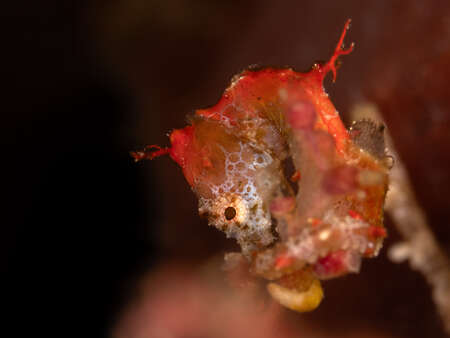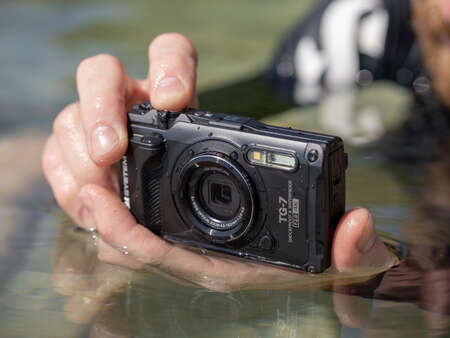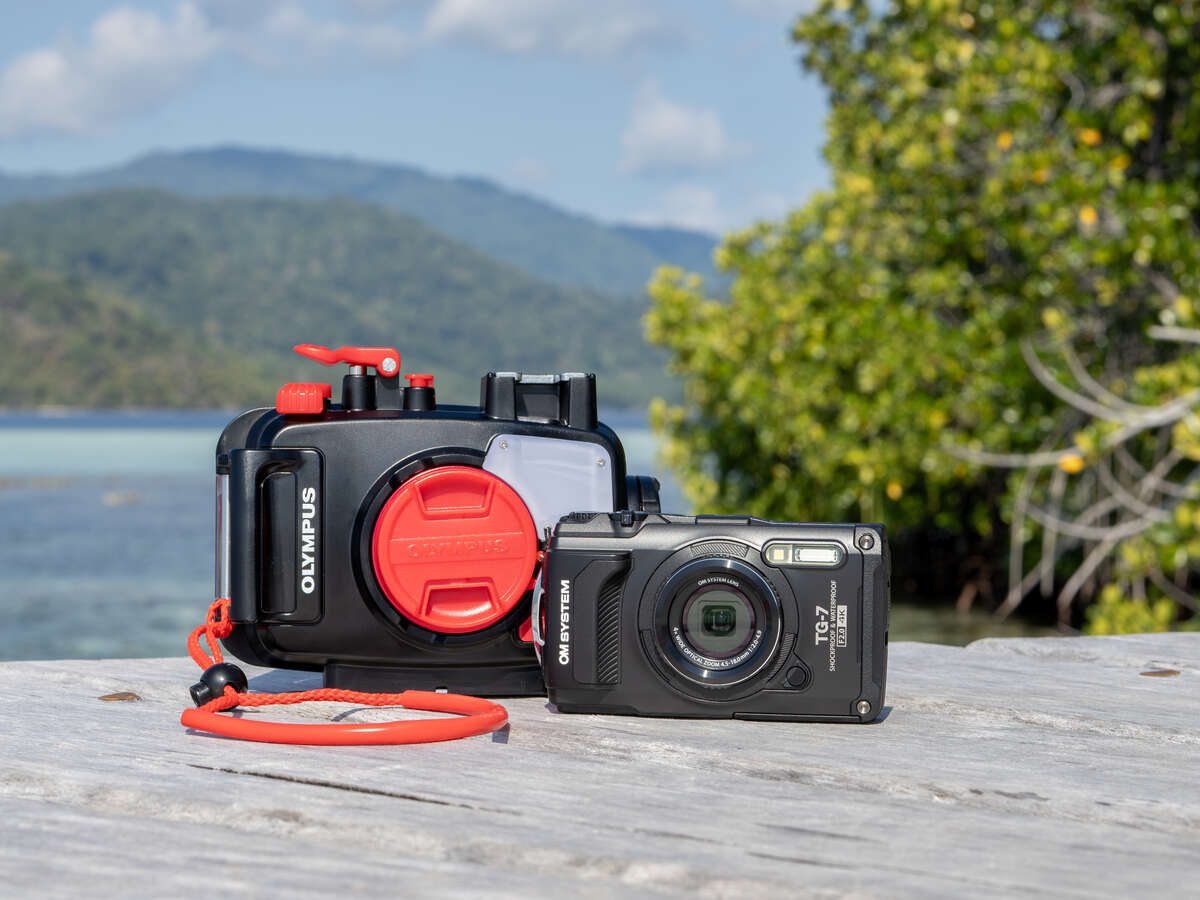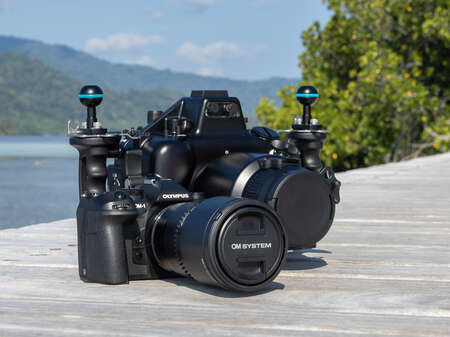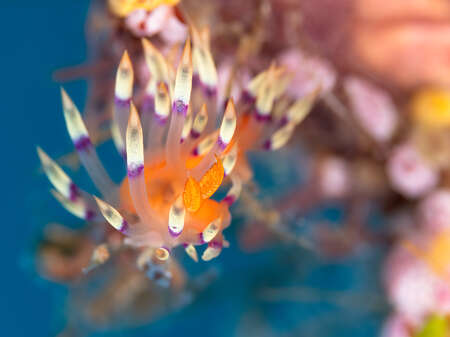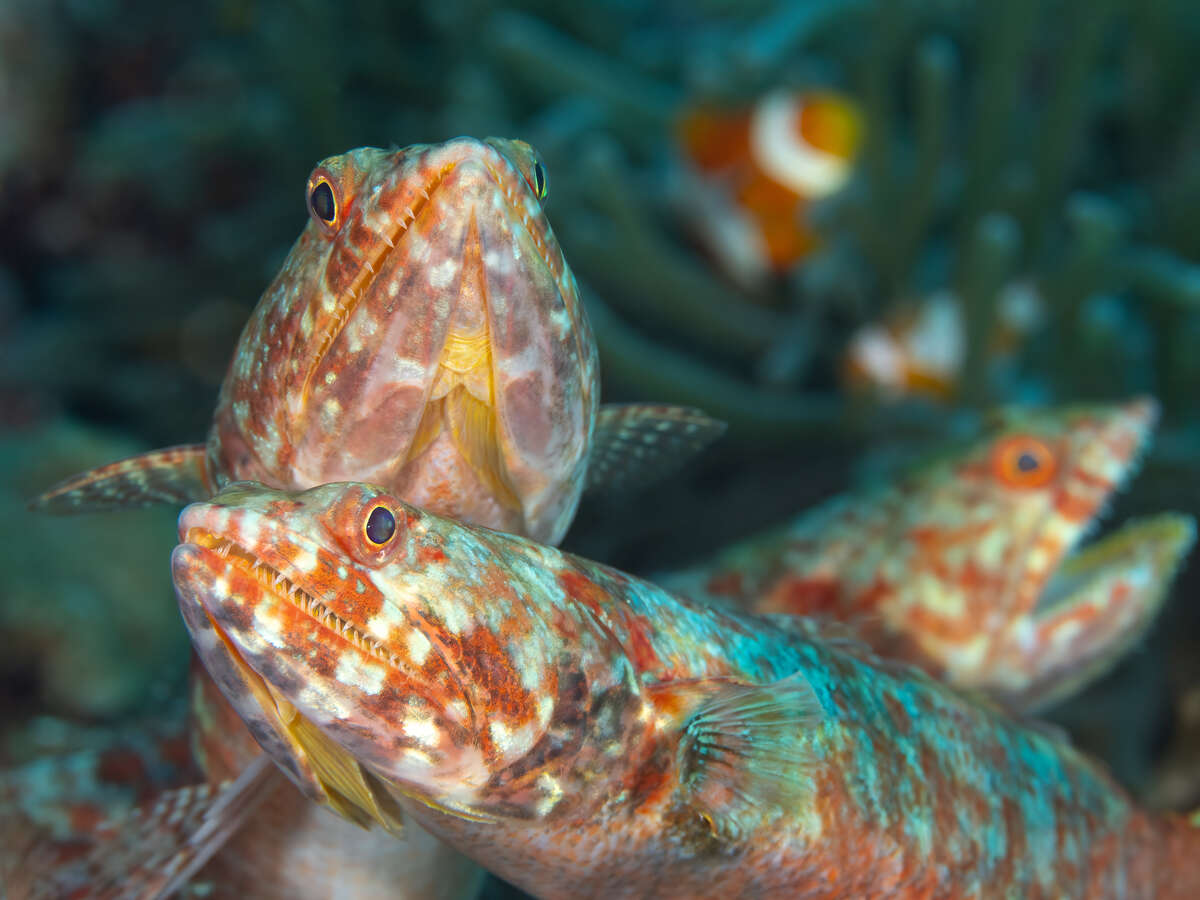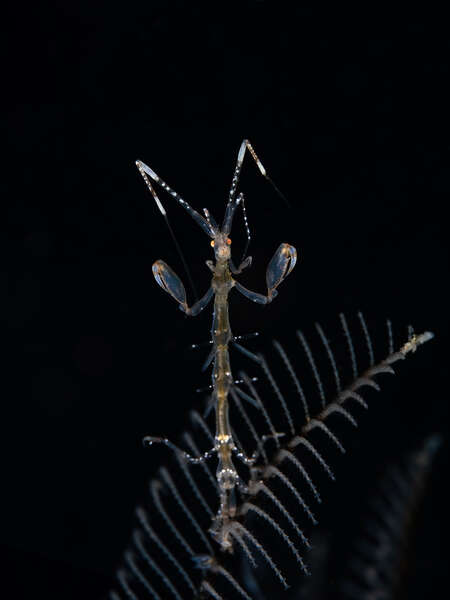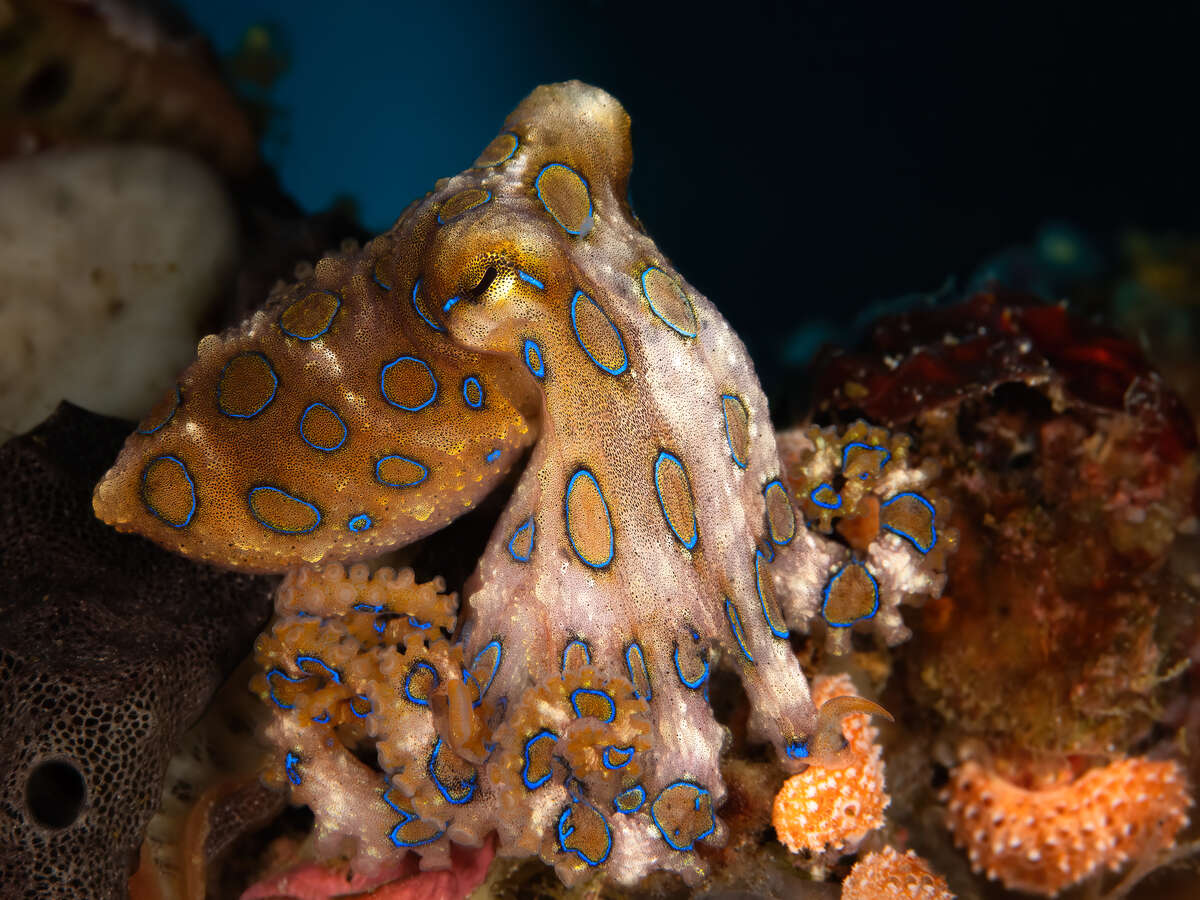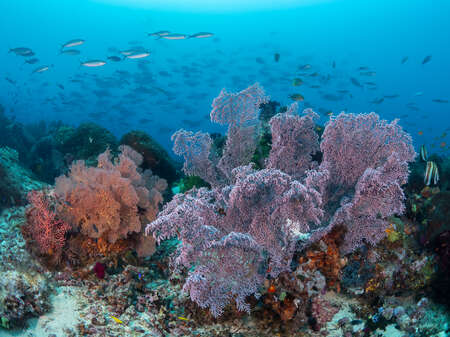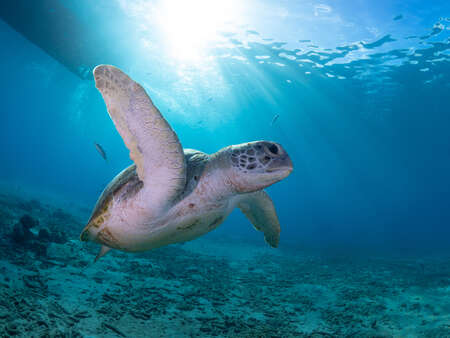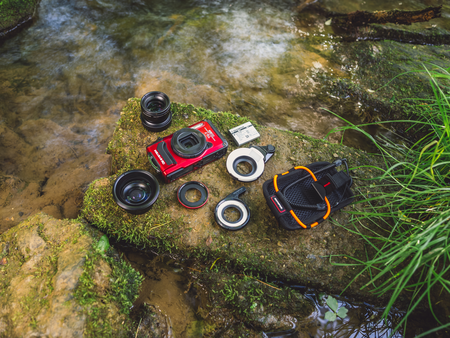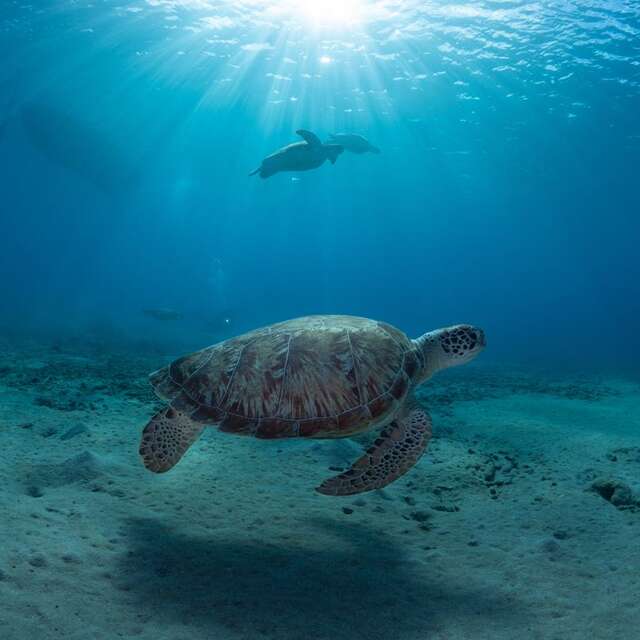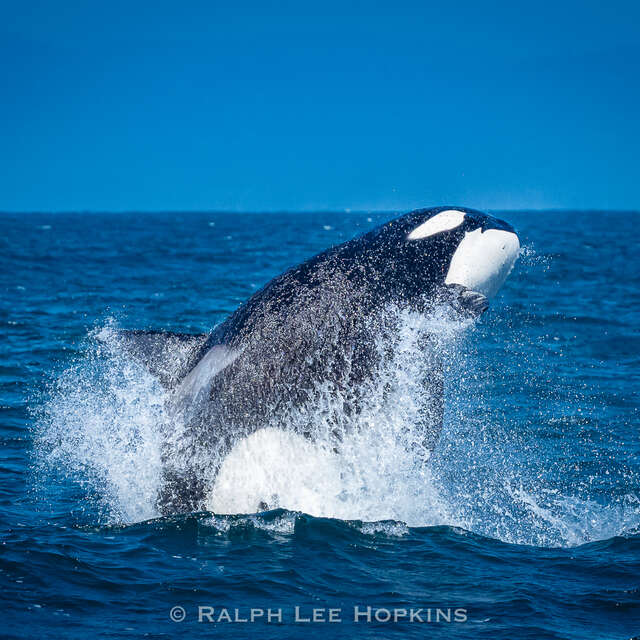Every year on June 8th, people around the world celebrate World Oceans Day to appreciate the importance of the oceans for our ecosystem and our lives. However, for most people, including the most talented photographers, our world's oceans are uncharted territory. Their view of nature's beauty essentially ends at the water's surface, with one exception—the circle of underwater photographers. Those who are not barred from entering Neptune's kingdom. As a diving photographer, you essentially receive an exclusive ticket to a completely crazy and quirky underwater circus. A place full of colorful protagonists and enchanting fairy tale forests. Underwater photographers have the opportunity to experience and capture the bustling and colourful activities in our oceans up close. Photographing bizarre small creatures, known as critters, can drive even experienced underwater photographers to the brink of despair. Capturing a mere 5mm Pontohi pygmy seahorse in an overgrown coral overhang during strong currents is about as easy as spinning a single thread strong enough to hold an elephant while being thin enough to serve as thread for a needle. Undoubtedly, underwater photography comes with its own set of challenges, whether in macro or wide-angle photography.
The art of underwater photography lies in a combination of perfect buoyancy control underwater, the right equipment, and knowledge of one's camera. The choice of equipment is crucial to creating impressive images underwater. OM System offers the right camera and a comprehensive range of lenses for both beginners and professional underwater photographers. A popular entry-level model for both divers and snorkelers is the Tough TG-7. Waterproof, shockproof, freeze-proof, and dustproof, this camera is truly tough. The Tough TG-7 features a special seal and a double-lock construction, promising absolute waterproofness up to a depth of 15 meters—a depth typically reserved for free divers. For those who want to go deeper, the PT-059 underwater housing is the perfect solution for upcoming dives.
Various underwater modes and accessories allow for numerous creative possibilities. Light situations can be adjusted from shallow to medium to deep to ensure the right colour balance. Optional lenses like the FCON-T01 wide-angle or the FCON-T02 fisheye converter guarantee an exorbitant capture angle. Colorful reef landscapes or sunken wrecks are thus easy to photograph. For the smallest reef inhabitants, the all-round camera offers everything an underwater macro enthusiast's heart desires, from macro to microscope mode to focus bracketing.
For ambitious underwater photographers and experienced divers, OM System offers a large number of professional cameras and lenses. Besides the popular Olympus OM-D E-M1 Mark III, the OM-1, and of course the new flagship, the OM-1 Mark II, there are two preferred types of lenses in the underwater photography scene: fisheye and macro lenses. The OM System lens lineup includes three different macro lenses: the M.Zuiko Digital ED 30mm F3.5, the M.Zuiko Digital ED 60mm F2.8, and the new class leader, the M.Zuiko Digital ED 90mm F3.5 IS PRO. Underwater housings and corresponding ports, depending on the camera, are available from third-party manufacturers.
How large the small can be is shown to us by the M.Zuiko Digital ED 90mm F3.5 Macro IS Pro after just a few fin strokes. But beware, if you approach your targeted macro subject too quickly, you'll often come up empty-handed. Many marine creatures are shy and skittish, posing a challenge for underwater photographers. The subjects disappear the moment they appear in the camera's autofocus. Those who master their camera and settings are clearly at an advantage. Aperture and shutter speed should be pre-selected to better focus on the subject. Playing with the aperture, changing the depth of field, is one of the most important design elements. A large aperture focuses on sharp details in the foreground and a soft bokeh in the background.
Another design possibility, besides depth of field, is the chosen perspective. Among underwater photographers, photographing an object from above or behind is a no-go. To effectively showcase a subject, an eye-level perspective should always be chosen.
When photographing quirky small creatures, the autofocus should be set to SPOT, making it easier to target and focus on details like the eyes. The aperture is pre-selected at ISO 200 depending on the desired depth of field, from 2.8 to 22. The shutter speed is best varied between 1/80 second and 1/250 second, depending on the given flash sync time. An indispensable and most important component in underwater photography is the use of an external light source. The deeper you dive, the less light penetrates the water, leading to dark and low-contrast images. Red and orange are completely absorbed after just a few meters. Whether as a flash or a lamp, only through the proper lighting of the subject do the colours shine and come to full effect. Flashlight also shortens the shutter speed, allowing underwater photographers to capture fast-moving subjects, like a ghost moray, sharply and in detail. Using external flash converters, flash sync times can be reduced to up to 1/8000 second, offering unprecedented artistic and creative freedom.
Often, the marine subjects in the depths of our oceans are no larger than a grain of rice and barely visible to the naked eye. Therefore, it is important to have a close focusing distance of the camera to the subject to capture the smallest creatures and their even smaller details. Those who approach closely enough without disturbing the reef inhabitants in their natural element will discover a world full of magical creatures, peculiar structures, and sublime beauty. Those who manage to heroically showcase a 4mm skeleton shrimp almost filling the frame will find a blue-ring octopus or Nemo and his playmates truly grateful and easy photo subjects in the future. A small focus light is recommended for a faster and well-functioning autofocus.
Reef landscapes, large fish, and sunken wrecks present underwater photographers with other challenges. How do I capture a wreck or the colorful reef right in front of my dive mask as a whole in a single image? Wide-angle or fisheye lenses provide the answer and the ability to capture entire scenes underwater in full. The M.Zuiko Digital ED 8mm F1.8 Fisheye PRO, with an aperture of 1.8, is the optimal lens even in poor lighting conditions. To be more flexible, the M.Zuiko Digital ED 8-25mm F4.0 PRO is available, a high-performance zoom lens that covers the range from ultra-wide-angle at 8mm to standard at 25mm with excellent image quality.
In underwater photography, the fisheye lens is one of the most important design possibilities. Get close to the subject to capture colors and details in the foreground without losing the activity and color dominance in the background. Natural light should be incorporated into the image design. This way, you can create an extraordinary image from a composition of flash and natural light. This type of photography certainly requires some practice and various settings at first. But no master has fallen from the sky, or directly into the ocean, yet.
Underwater photographers quickly realize that no one dive is the same. Sometimes currents can be strong, sometimes the lighting conditions are catastrophic. Other times, the same dive spot shines in the sunlight, and the reef roof glows in a thousand colors. Nothing is predictable, and that’s why you need to be quick underwater and master your equipment. Every setting should be spot on to give free rein to image composition, even when speed is required. This is where the lightning-fast autofocus of the OM-D and OM-1 cameras comes into play. For fast-moving subjects and so-called surprise moments, it’s a real game-changer for underwater photographers.
In addition to all the photographic knowledge and diving experience, underwater photographers should primarily pay attention to their surroundings and treat the oceans and their inhabitants with respect. Touching or disturbing marine life can not only harm the environment but also lead to dangerous situations. Photographing underwater requires patience, practice, and above all, respect for the fragile underwater world. With the right equipment, technique, and respect, we underwater photographers can surely create impressive images and simultaneously contribute to raising awareness for the protection of our oceans—not just on World Oceans Day, but throughout the year.
Featured Products:
- OM-1
- Tough TG-7
- M.Zuiko Digital ED 90mm F3.5 Macro IS PRO
- M.Zuiko Digital ED 8mm F1.8 Fisheye PRO
- M.Zuiko Digital ED 60mm F2.8 Macro
- PT-059
Share your photos:
Upload your best underwater photos to our World Oceans Day User Gallery or share your shots on our World Oceans Day Facebook post.
SAVE $50 ON TG-7 & 20% ON TOUGH ACCESSORIES
COUPON CODE: TOUGHSUMMER
Offer valid through June 12 at 11:59:59 PM ET.
SHOP TG-7 & ACCESSORIES
ABOUT MELANIE & DAVID BENZ
Web: art-and-water.de/
Instagram: @artandwater_photography
Adventurer and couple. Addicted to diving and traveling we are cruising the blue planet. Whether behind or in front of the camera, our element is water. Remote countries and the depths of the oceans - it is the fascination of the unknown which captivates and boosts us. As photographers and editors we got to know most of the seven seas and felt into love with them. From Papua New Guinea to Raja Ampat, from Japan through Indondesia to the sunny Caribbean we have been visiting the most beautiful dive sites on our blue planet.
Thereby we photographed whale-sharks in the Atlantic and the North Pacific, dived with sharks and dolphins at the wrecks of the South Pacific and portrayed manta rays in the colorful coral gardens of Indonesia and Japan. Finally we found enchanting mermaids and sirens in the mystical underwater worlds of the Mexican Cenotes. Definitively - our job is the ocean. A place which could not be more beautiful. With the founding of Art & Water Photography in 2010 we realized our dream. More a life-task than a job with lots of engagement and heart for the beauty of our oceans.
